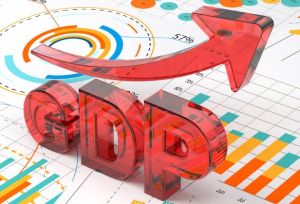Analytics, Direct Speech, Economics, EU – Baltic States, GDP, Latvia, Markets and Companies
International Internet Magazine. Baltic States news & analytics
Thursday, 03.07.2025, 04:36
Economic growth in Latvia shoots up in 2017
 Print version
Print version |
|---|
According to the flash estimate by the Central Statistical Bureau (CSB),
gross domestic product (GDP) in the second quarter of 2017
grew by 1.3% quarter-on-quarter (at constant prices, seasonally
adjusted data). Growth is slightly slower than was observed in the first
quarter, but annual changes remain considerable. Year-on-year, GDP increased by
4.1% (unadjusted data). Adjusted by working days, the rise is even greater
(4.8%), because in the second quarter of this year, there were two working days
less than last year.
Data available before the GDP flash estimate indicated that the quarterly
growth would be fast. Yet after the weak growth of last year, this year’s
recovery is neither a surprise nor a great achievement. Construction (+14% in
Q2) and investment activities are resuming owing both to favourable financial
conditions and increased lending as well as the acceleration of European Union
(EU) funds in the second quarter.
Industry (+8.0%), which, in recent years, has been one of the pillars
supporting the economy is achieving ever new records. Operational data on
mining and quarrying point to vigorous growth in the first half of the year,
which is related to construction recovery. Energy industry is also
exhibiting commendable performance this year, even though the results of the
second quarter likely lag considerably behind the fast growth in the first
quarter. The sustained growth of manufacturing has taken place chiefly due to
the favourable global environment.
In service branches, growth in Q2 was not as fast (+3.0%). The transport
sector performed surprisingly well in the first quarter, but operational data
on cargo flows in ports and on railway have deteriorated by the middle of the
year. The situation in the sector might be improved by road transport where
data on exports in April and May indicate growth.
Retail trade in the second quarter grew rapidly compared to the pace we
have seen over the past year. The rise in disposable income of households was
fostered by the favourable conditions in the labour market, but real purchasing
power growth was hindered by inflation. Consumer confidence, which dropped
rapidly at the end of last year, has been growing all this year, approaching a
post-crisis record level in July. This is an indication that retail growth
could continue also in the third quarter.
In June, Latvijas Banka raised its economic growth prediction for this year and GDP data for the second quarter indicate that it was right to do so. In the coming months, positive risks are related to the global environment and a faster cyclical recovery. Previously we named the expected tax reform among the factors that could potentially promote medium-term growth. However, due to many alterations the recently adopted changes in the tax system are unlikely to bring as positive a contribution to the economy as estimated before.
The changes in the regulation of personal income tax and the increased
minimum wage will foster consumption in the short term, but the compensatory
measures (mandatory payments of government social insurance and increased excise
tax) will reduce the positive effects. In the longer term, the new corporate
income tax model has the potential of increasing investment, but investment
decisions of entrepreneurs will also depend on other factors, for example, the
strength of judicial system and the quality of business environment. There is
the risk however, that the great haste, last minute changes and the fact that
the tax system has to a certain degree become more complicated increase
uncertainty and actually impede inflows of investment in the economy. We can
only hope that the implementation of the new laws and the process of informing
the population is smooth and the government sticks to its word to leave
tax regulation essentially unchanged in the coming years.
GDP flash estimate can be slightly altered by data coming in over the month
regarding sectoral developments, but, if the existing trends persist, GDP
growth could be faster than forecast. The full GDP data, including information
on growth in all branches, as well as GDP from the expenditure and income side,
will be published in a month.








 «The Baltic Course» Is Sold and Stays in Business!
«The Baltic Course» Is Sold and Stays in Business!

